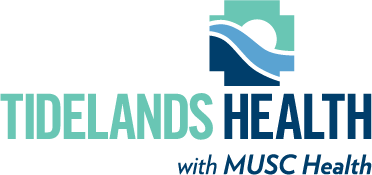Eligibility
Who Is Eligible
Employees
You are eligible to participate in all benefits offered by Tidelands Health if you are full-time or part-time. PRN team members are eligible for the retirement plan, EAP, YouCare wellbeing activities and Tidelands Health Perks.
Your Spouse
If your spouse is also employed by Tidelands Health: You cannot be covered as both an employee and spouse on each other’s plans. Your spouse must choose whether to be enrolled under their own plan or as a spouse on your plan. If you are covered as a spouse on your spouse’s plan, the spousal surcharge * does not apply.
If you choose to enroll in Supplemental Life Insurance, you cannot also be enrolled for spouse life coverage on your spouse’s plan and this same rule applies if the spouse enrolls in Supplemental Life.
* Spousal Surcharge (medical plan only): Applies to team members whose spouse has access to health insurance with his/her employer, but you choose to enroll your spouse in the Tidelands Health medical plan.
Your Dependent Children
You may cover your dependent child(ren) up to age 26 and unmarried child(ren) of any age who are incapable of self-support due to a mental or physical disability, which began prior to age 26, and who are primarily dependent upon you.
Required Documentation for Dependents
When you add a new dependent to your benefits, you must provide proof of relationship. Common forms of identification are listed below; contact Human Resources if you have any unusual circumstances.
Documentation for a Spouse
- You can submit your prior year IRS 1040 (preferred) (just the page that shows spouse/dependent information and residence address; black out any financial information) or,
- If you are married and filing separately, you can submit your prior year IRS 1040 for both you and your spouse showing Filing Separately Status (just the page that shows spouse/dependent information and residence address; black out any financial information), or
- If you were married in the current year, you may present your Marriage Certificate.
Documentation for a Child
The type of documentation required will depend on your relationship to the child.
- Birth child/stepchild to age 26: Prior year IRS 1040 naming the child as a dependent, or a copy of full Birth Certificate that lists both parent names.
- Adopted child: Prior year IRS 1040 naming the child as a dependent, or Adoption Records.
- Disabled adult child (over age 26): Prior year IRS 1040 naming the child as a dependent or a copy of full Birth Certificate that lists both parent names, and Social Security Disability Papers.
- Legal guardianship/custody (birth to age 26): Prior year IRS 1040 naming the child as a dependent and Court Document appointing the employee as legal guardian/custodian.
Making Changes to Benefits
Outside of a new hire enrollment, you can generally only enroll or make changes to your benefits during annual Open Enrollment, which is held in August each year with benefits effective October 1.
If you have a qualifying life event (QLE) mid-year, you can change your benefit elections, provided you make the change within 30 days from the date of the event. Examples of qualifying life events include:
- Marriage
- Birth or adoption
- Loss or gain of other coverage
- And other types of QLEs
Keep in mind, the changes you make must be directly related to the event. For example, should you get divorced, you must drop your spouse from the plan, as they would no longer meet the definition of an eligible dependent.
Learn more about all QLEs and the documentation required.
How to Report a Qualifying Life Event
If you have a qualifying life event during the year, you should report the QLE and request the corresponding benefit change via Workday within 30 days of the event, following these steps. If you miss the deadline, you will not be able to make changes until the next Open Enrollment period.
